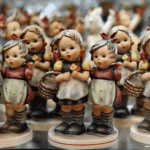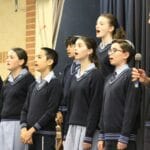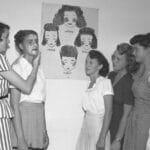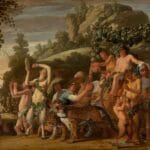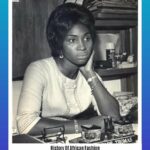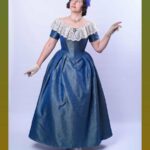Get ready to party like it’s the ’90s! Join us as we dive into the captivating world of rave fashion. We’ll show you how to rock those eye-catching colors, baggy silhouettes, and expressive accessories that made ravers stand out a mile away. From seasoned ravers to fashion lovers alike, this guide will inspire you to recreate iconic looks and make them uniquely yours.
Outperforming the Competition: 90s Rave Fashion
What Made 90s Rave Fashion So Iconic?
Think back to those iconic images from the 90s rave scene – what comes to mind? The 90s rave scene wasn’t just about the music; it was a cultural movement defined by inclusivity, self-expression, and a desire for community. Early raves, with roots in the UK’s late 80s acid house scene, were often illegal, organized in secret locations, adding to the scene’s allure. This “underground” beginning allowed the scene to cultivate its own unique style, free from mainstream influence.
Here’s a breakdown of the elements that defined this unique style:
- Neon Brilliance: Picture this: a sea of dancing bodies illuminated by blacklights, their clothes practically glowing in the dark. Neon colors like electric pink, green, and yellow were staples, creating an otherworldly atmosphere where everyone looked ready to party. This visual intensity was a perfect reflection of the music that provided the soundtrack for all-night dance parties: genres like house, techno, trance, and jungle.
- Baggy Was Best: Remember those oversized jeans and pants? They weren’t just a fashion statement – they were all about freedom of movement. Ravers needed clothes that could keep up with their all-night dance sessions, and baggy silhouettes provided the perfect solution. JNCO jeans, with their extremely wide legs, oversized pockets, and bold designs, were a prime example of this. Originating from the 80s breakdancing scene, parachute pants, made from nylon or other lightweight fabrics, also became a rave staple.
- Crop Tops for Days: Amidst the baggy pants and oversized tees, crop tops added a touch of feminine energy. They were all about embracing body positivity and showing a little skin while still feeling comfortable and confident on the dance floor.
- Accessorize to Mesmerize: No 90s rave outfit was complete without a healthy dose of accessories. Glow sticks were practically mandatory, creating trails of light as ravers moved to the music. Pacifiers became a symbol of the scene’s carefree attitude, while Kandi bracelets, often handmade and traded with fellow ravers, represented connection and friendship. Platform shoes added height and edge, and let’s not forget the iconic bucket hat, shielding ravers from the heat of the crowd. This emphasis on accessories furthered the scene’s ability for self-expression and community building. Trading kandi bracelets, for example, became a way to make new friends and share the PLUR (Peace, Love, Unity, and Respect) ethos.
From Underground Scene to Mainstream Madness
What started as an underground movement soon began to seep into the mainstream. By the mid-to-late 90s, fashion magazines and music videos were showcasing elements of rave culture. Even high-fashion designers started incorporating neon hues, baggy silhouettes, and statement accessories into their collections. This adoption by the mainstream suggests that 90s rave fashion wasn’t just a fad; it represented a cultural shift towards individuality, self-expression, and a rejection of traditional fashion norms.
90s Rave Fashion: Still Relevant Today?
Absolutely! In fact, 90s fashion, particularly rave style, has seen a huge resurgence in recent years. Perhaps it’s nostalgia for a simpler time, or maybe it’s the desire to express ourselves authentically in a world that often feels overly curated. Whatever the reason, the spirit of 90s rave fashion is alive and well. The echoes of 90s rave fashion are evident in today’s streetwear trends, with oversized silhouettes, bold colors, and a touch of playful rebellion finding new life. Elements like baggy silhouettes and bold prints have even been adopted by high fashion. This resurgence speaks to the enduring legacy of 90s rave fashion and its ability to transcend time and trends.
Ready to Channel Your Inner Raver?
If you’re feeling inspired to add a touch of 90s rave to your wardrobe, go for it! Embrace those vibrant colors, experiment with baggy silhouettes, and don’t be afraid to pile on the accessories. Most importantly, remember that 90s rave fashion was all about expressing yourself and celebrating individuality. So, put your own spin on it, have fun, and let your unique style shine through!
What did people wear to raves in the 90s?
Picking up where we left off, imagine stepping into a world where the music wasn’t just background noise – it was the very pulse of the night. The 90s rave scene wasn’t just about the music, though. It was an explosion of energy and a giant middle finger to the rules of everyday life. It was a place where people went to escape the ordinary and embrace something different, something more. Imagine a giant youth movement, not about politics, but about pure, uninhibited joy and connection.
Think about it like this: PLUR wasn’t just some catchy acronym – it was like the unspoken rules of the game. Peace, Love, Unity, Respect – these weren’t just words; they were a way of life. You went to a rave, and you left your baggage at the door.
And the clothes? Forget everything you know about fashion because raves were about breaking the mold. Think neon colors brighter than a thousand suns, clothes so baggy you could practically swim in them, and accessories that would make your grandma raise an eyebrow (or maybe just ask where she could get a pair!). It was like everyone decided to dig into their imaginations and pull out the most outrageous, most “them” outfit they could find. Customization wasn’t just cool, it was practically mandatory. People would spend hours sewing glow sticks onto their clothes, or cutting up old T-shirts to make something totally unique. It was about showing off your personality, your own brand of awesome, and nobody was there to judge.
The craziest part? You can still feel the spirit of the 90s rave scene today. That love for bright colors, those oversized silhouettes you see everywhere? That’s pure rave influence, sneaking its way into mainstream fashion. It’s like a little wink from the past, reminding us that it’s okay to let loose, break the rules, and dance like nobody’s watching. And honestly, in a world that can sometimes feel a little too serious, that’s a message we can all get behind.
Deconstructing the 90s Rave Pants Phenomenon:
So, you’re diving headfirst into the electrifying fashion scene of 90s raves? Good for you! To really nail that iconic look, you gotta start with the pants. We’re talking about the kind of pants that were practically made for dancing all night and expressing your unique self.
But forget the generic term “rave pants.” The 90s were all about specific styles, each representing a unique facet of the scene’s rebellious spirit.
The Big Three: Unveiling the Names
- Parachute Pants: Imagine pants so loose and flowy; it’s like wearing a gentle breeze. Yep, that’s parachute pants for you. Made from lightweight fabrics like nylon, these pants were perfect for letting loose on the dance floor. They provided freedom of movement and a sense of airiness, essential for those all-night dance sessions.
- JNCO Jeans: Now, if you wanted to take “baggy” to a whole new level, you’d slip into a pair of JNCO Jeans. These bad boys were all about pushing boundaries and thumbing their noses at conventional fashion. We’re talking super-wide legs, massive pockets, and eye-catching embroidery. They were a declaration of individuality, a way to say, “I’m here, I’m different, and I’m gonna dance to my own beat.”
- Harem Pants: For those who preferred a more bohemian flair, there were Harem Pants. Picture loose, flowing fabric that gracefully gathers at the ankles—that’s the essence of Harem pants. They offered a comfortable and stylish alternative to the other rave pant styles and were often crafted from materials like rayon or velvet, exuding a sense of effortless style and comfort.
Beyond the Big Three: Other Notable Styles
While the “Big Three” dominated the scene, other pants styles also found their place at raves:
- Cargo Pants: Practical and stylish, cargo pants provided ample storage for all your rave essentials.
- Wide-leg Jeans: Beyond the extremes of JNCOs, wide-leg jeans offered a more understated approach to baggy silhouettes.
- Bell Bottoms: Experiencing a resurgence in the 90s, bell bottoms added a touch of retro flair to the rave scene.
These pants were designed to move with you, ensuring you could dance the night away without feeling restricted. More than just clothing, these baggy, bold pants were a statement, reflecting the rebellious and expressive spirit of the rave culture.
Rave Dress Code: Decoding the Fashion, Then & Now
So, we’ve talked about the wild world of rave fashion, but let’s dive deeper into what makes this style so unique. Think of it as a way to unleash your inner artist and let your personality shine through what you wear! There’s a reason why you see a kaleidoscope of colors and patterns at raves – it’s all about embracing that electric energy and freedom of expression.
The Roots of Rave Dress: ’90s Influence
Rave culture emerged in the late 1980s, fueled by electronic music and underground parties. The fashion reflected this rebellious, DIY spirit.
- Bright Colors: Neon hues, vibrant patterns, and anything eye-catching dominated the scene.
- Baggy Silhouettes: Comfort for all-night dancing was paramount, leading to oversized t-shirts, wide-leg pants, and loose-fitting clothing.
- Smiley Face Iconography: A symbol of positivity and the acid house music genre.
- Kandi Bracelets: Beaded bracelets, often traded with fellow ravers, representing PLUR.
This fashion wasn’t about fitting into a box; it was about breaking free from those everyday norms! You won’t find any stuffy dress codes here. It’s more about feeling comfortable enough to move freely and dance the night away.
Modern Rave Dress Codes: Diversity & Evolution
- Genre Influences: Today, rave fashion varies based on the subgenre of electronic music. For example, a techno rave might see darker, more industrial looks, while a psytrance event could feature psychedelic patterns and bohemian elements.
- Comfort & Functionality Remain Key: While styles have evolved, the need for comfortable clothing and shoes suitable for dancing remains essential.
- Sustainable & Ethical Choices: Many modern ravers are conscious of the environmental impact of fast fashion and opt for vintage, upcycled, or ethically produced clothing.
- Body Positivity & Inclusivity: Modern rave culture embraces diversity and encourages self-expression through unique personal styles.
Essential Elements of Rave Attire:
- Tops: Crop tops, band t-shirts, mesh shirts, holographic jackets.
- Bottoms: Cargo pants, flowy skirts, leggings, shorts.
- Footwear: Sneakers, platform shoes, boots (depending on the venue and weather).
- Accessories: Kandi bracelets, diffraction glasses, glow sticks, body glitter, creative makeup.
Tips for Choosing Your Rave Outfit:
- Research the Event: Consider the music genre, venue, and overall vibe to guide your outfit choice.
- Prioritize Comfort: You’ll be dancing for hours, so choose breathable fabrics and footwear that won’t leave you with blisters.
- Express Yourself: Don’t be afraid to experiment and let your personality shine through your clothing.
- Respect the Culture: Be mindful of cultural appropriation and choose attire that aligns with the values of PLUR.
Remember, rave fashion keeps evolving, so don’t be afraid to experiment and create your own unique style. It’s all about having fun, feeling confident, and expressing yourself in this awesome, inclusive community.
What was the 90s Rave Scene Like?
The 90s rave scene was a counter-cultural revolution fueled by pulsating beats and an unshakeable belief in PLUR (Peace, Love, Unity, Respect). It transformed abandoned warehouses and forgotten fields into temporary havens of sonic liberation, attracting a generation hungry for connection and escape.
But it was more than just glow sticks and baggy pants – it was a cultural movement defined by inclusivity, self-expression, and a desire for community. Born in the underground, early raves were often illegal, organized in secret locations, adding to the scene’s allure. This DIY ethos extended to the music, a potent cocktail of house, techno, and trance, that formed the movement’s beating heart and soul.
Fashion played a crucial role in the 90s rave scene’s visual identity. Bright, bold, and unconventional, it was a sea of neon colors, psychedelic patterns, and oversized silhouettes. But beyond trends, it was about individuality, freedom, and breaking societal norms. People expressed their unique identities through bucket hats, platform shoes, baggy pants, crop tops, and bandanas, often customizing their looks with DIY flair.
Central to the scene was PLUR, more than just a slogan; it was a code of conduct that fostered a sense of community. This ethos of inclusivity and acceptance meant the 90s rave scene embraced people from all walks of life. The trading of colorful beaded bracelets (“kandi”) became a symbol of friendship and connection.
While the media often misrepresented the scene, focusing on negative aspects like drug use and ignoring its positive social and cultural impact, the reality was more nuanced. Though drug use existed, it wasn’t the defining characteristic for many. Many ravers found a sense of belonging and purpose within the scene that they hadn’t experienced elsewhere, emphasizing community and shared experiences.
More than just a fleeting trend, the 90s rave scene left an indelible mark on music, fashion, and youth culture, its echoes still reverberating in today’s electronic music landscape. The spirit and aesthetics of the era continue to influence contemporary electronic music festivals and subcultures, proving its lasting legacy.
Discovering the true 1940 penny value can be like a treasure hunt. If you’re a history buff, you’ll be thrilled to dive into the Antebellum era, a captivating period in American history. Take a trip back to 80’s New York and relive the vibrant and enigmatic era of music, fashion, and culture.

